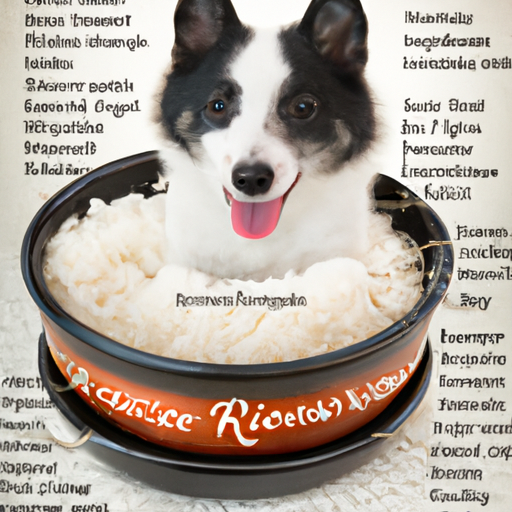Understanding Your Dog’s Nutritional Needs
Your role as a caregiver to your furry friend involves understanding their nutritional needs. Dogs are omnivores, which means they can enjoy a variety of foods, including grains like rice. However, not all rice is created equal.
-
Brown rice: This is a whole grain which means it’s high in fiber. It can help with your dog’s digestion and keep them feeling full.
-
White rice: This is a refined grain, which means it has had the husk, bran and germ removed. It’s easier for dogs to digest, but it’s not as nutrient-dense as brown rice.
-
Wild rice: This isn’t technically rice, but a type of grass seed. It’s high in protein and fiber, but some dogs may find it difficult to digest.
How Rice Can Benefit Your Dog
Rice is more than just a filler. It can provide several health benefits for your dog. Here’s a table to break it down for you:
| Type of Rice | Benefits |
|---|---|
| Brown Rice | High in fiber, promotes healthy digestion, keeps your dog feeling full |
| White Rice | Easy to digest, good source of carbohydrates |
| Wild Rice | High in protein and fiber, but may not be suitable for all dogs |
When to Feed Your Dog Rice
Your dog’s diet shouldn’t consist solely of rice. However, it can be a good addition to their regular meals, or a temporary meal substitute when they’re not feeling well.
-
When they have an upset stomach: Rice is bland and easy to digest, making it a good choice when your dog has an upset stomach.
-
When they need to lose weight: Brown rice can help your dog feel full without adding too many calories.
-
When they’re a picky eater: Mixing a bit of rice with their regular food can make it more appealing.
How to Prepare Rice for Your Dog
Preparing rice for your dog is simple. Just remember to avoid adding any seasonings or spices that can upset your dog’s stomach. Follow these steps:
- Rinse the rice under cold water to remove any dirt or debris.
- Add one part rice to two parts water.
- Bring the water to a boil, then reduce the heat and let it simmer until the rice is cooked.
- Let it cool before serving it to your dog.
The Risks of Feeding Your Dog Rice
While rice can be beneficial for your dog, it’s not without its risks. Too much rice can lead to weight gain and nutritional deficiencies. Brown rice also contains phytic acid, which can interfere with the absorption of certain minerals.
FAQ
Q: Can I feed my dog rice every day?
A: It’s best to only feed your dog rice as a supplement to their regular diet, not as a daily meal.
Q: Can dogs eat raw rice?
A: No, raw rice can be hard for dogs to digest and can even cause digestive issues.
Q: Can dogs be allergic to rice?
A: While it’s rare, dogs can be allergic to anything, including rice. If you notice any unusual symptoms after feeding your dog rice, consult with a vet.
Q: What about rice in dog food?
A: Most commercial dog foods that include rice use white rice, as it’s easier to digest. However, some high-quality brands use brown or wild rice.
Q: How much rice can I feed my dog?
A: It depends on your dog’s size and dietary needs. As a general rule, rice should make up no more than 10% of your dog’s diet.



